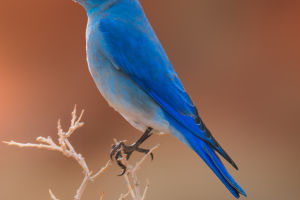Kingfishers are colorful birds found worldwide, mostly in tropical areas of Africa, Asia, and Oceania, but also in Europe. They prefer deep forests near calm water like ponds and rivers. There are 118 species in this bird family, divided into three groups and 19 types.
All kingfishers have large heads, long sharp bills, short legs, and small tails. Most have bright feathers, and males and females look similar. They eat various prey, often catching it from a perch.
While they're known for fishing, many species live away from water and eat insects. Kingfishers nest in holes, often in river banks or termite nests.
Description
The smallest kingfisher is the African dwarf kingfisher (Ispidina lecontei), which is about 10 cm (3.9 in) long and weighs between 9 and 12 g (0.32 and 0.42 oz).
The largest kingfisher in Africa is the giant kingfisher (Megaceryle maxima), measuring 42 to 46 cm (17 to 18 in) long and weighing 255–426 g (9.0–15.0 oz).
In Australia, the laughing kookaburra (Dacelo novaeguineae) is the heaviest species, with females reaching nearly 500 g (18 oz) in weight.
Most kingfishers have bright plumage, often in shades of green and blue. This brightness isn't due to iridescence or pigments but results from the feather structure scattering blue light (known as the Tyndall effect). In most species, males and females look similar, with any differences being very subtle, usually less than 10%.
Kingfishers are characterized by their long, dagger-like bills. Species that hunt fish typically have longer and more compressed bills, while those hunting prey on the ground have shorter and broader bills. The shovel-billed kookaburra stands out with its exceptionally large bill, used for digging through forest floors to find prey.
Their legs are generally short, though species feeding on the ground may have longer tarsi (lower leg parts). Most kingfisher species have four toes, with three toes pointing forward and partially fused at the base ("syndactyl").
Most kingfisher species have dark brown irises. They possess excellent vision, including binocular vision which aids in depth perception, and are known for their strong color vision. Unlike some birds, they have limited movement of their eyes within their sockets and instead rely on head movements to track prey.
When hunting underwater, kingfishers can compensate for the refraction of light and reflections, allowing them to accurately judge depth. They also have nictitating membranes that cover their eyes to protect them during dives. For instance, the pied kingfisher has a specialized bony plate that slides over its eyes upon hitting the water, providing additional protection.
Diet and feeding
Kingfishers are versatile hunters with a diverse diet. While some are famous for catching fish, they also prey on crustaceans, frogs, amphibians, worms, molluscs, insects, spiders, centipedes, reptiles like snakes, and occasionally birds and mammals.
Different species may specialize in certain prey or consume a wide range of foods. Variations in diet can even be seen among populations of the same species across different regions.
Forest-dwelling kingfishers, like those found in woodlands, mainly eat insects such as grasshoppers. Conversely, kingfishers near water are specialized fish hunters. There are even instances, such as with the red-backed kingfisher, where they raid the nests of other birds like fairy martins for nestlings.
Kingfishers typically hunt from a prominent perch. When they spot prey, they dive swiftly to catch it, then return to their perch to consume it. To handle larger prey, they may beat it against the perch to kill it and remove protective spines or bones. After preparing the prey, it's manipulated and swallowed whole. Sometimes, indigestible parts like bones and scales are regurgitated as pellets.
The shovel-billed kookaburra is notable for using its large, wide bill like a shovel to dig for worms in soft mud, showcasing unique feeding behavior among kingfishers.
Status and conservation
Several species of kingfishers are facing threats to their survival due to human activities and habitat changes. Many of these species inhabit forests with restricted ranges, especially those found on islands. The main threats they face include habitat loss from deforestation and degradation, often caused by human activities. Additionally, introduced species can pose a threat by competing for resources or preying on these birds.
Lykkers,after exploring the fascinating world of kingfishers, from their vibrant plumage and specialized hunting techniques to the challenges they face in the wild, what are your thoughts?
Do you admire their adaptability across diverse habitats, or are you concerned about their conservation status? Share your thoughts on how we can protect these remarkable birds and ensure their survival for future generations. Together, we can make a difference in safeguarding the natural world they depend on.


